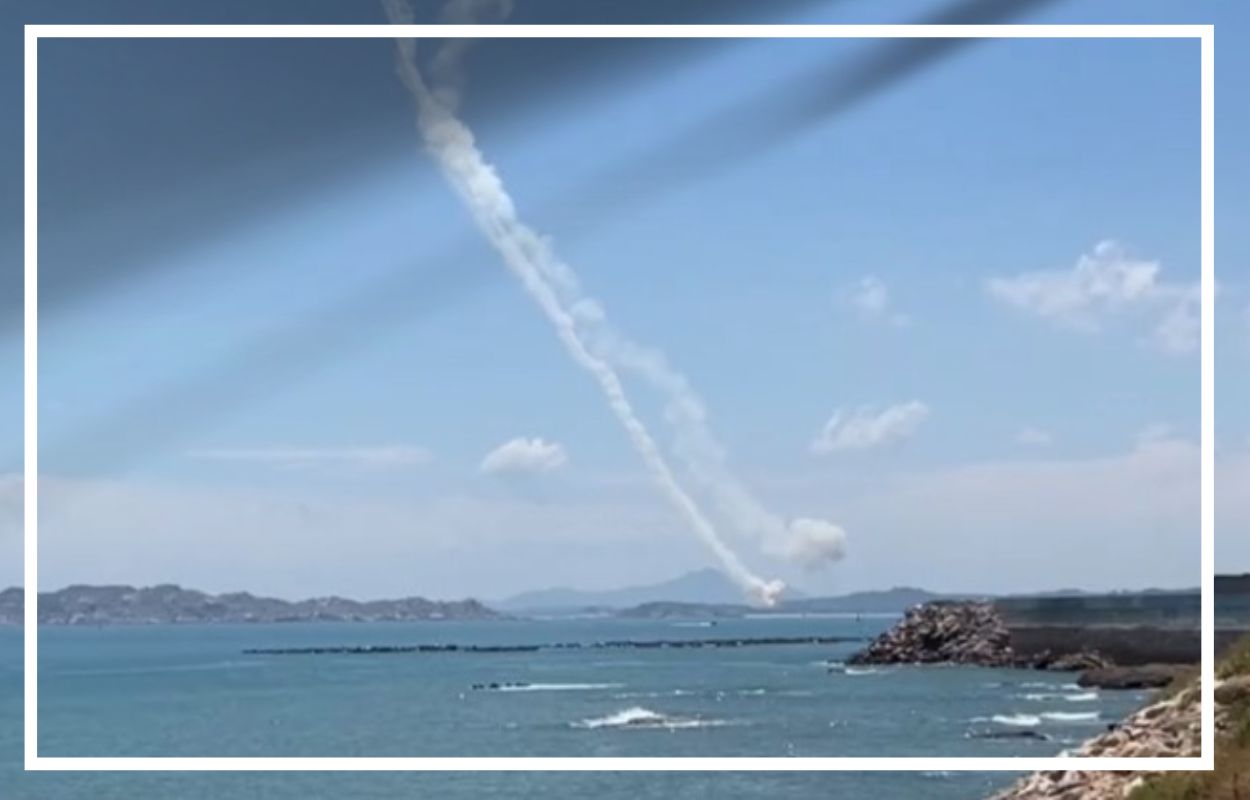On what was anticipated to be the penultimate day of extensive exercises carried out in reaction to a visit to the island by US House Speaker Nancy Pelosi, Chinese soldiers participated in drills on Sunday that were centered on land attacks and long-range airstrikes around Taiwan, according to its military.
Around noon local time on Sunday, the Chinese military’s Eastern Theater Command announced that it had “as planned” carried out live-fire drills in the air and on the water near Taiwan.
The command stated in a statement published to its official account on the social media site Weibo that the drills “focused on joint fire land strikes and long-range air strike capabilities.” The command did not say if the drills were complete.
According to Chinese official media, the exercises, which were supposed to take place in six zones around the island, started on Thursday and were supposed to go through Sunday at noon local time in Beijing.
3⃣️#Pelosi's visit to Taiwan has given the lie to the US government's commitment to have only unofficial relations with Taiwan. Could a visit of the No. 3 figure of the US government aboard military aircraft escorted by naval vessels be described as “unofficial”?
— Hua Chunying 华春莹 (@SpokespersonCHN) August 7, 2022
According to Taiwan’s Defense Ministry, 66 Chinese airplanes and 14 Chinese boats were seen flying over the Taiwan Strait as of 5 p.m. local time on Sunday.
According to the statement, 12 of the 22 jets that entered the airspace over Taiwan crossed the median line.
Prior to Saturday, when it said that Chinese military maneuvers near the island may be a “potential simulated attack,” the ministry referred to the exercises as a “simulated strike against the main island of Taiwan and Taiwan’s navy vessels.”
According to the Defense Ministry, Taiwan’s military “closely observed” the situation and sent out aircraft and ships to “appropriately” respond to Chinese military drills near the island. Drones “intruded,” according to the report, into nearby islands that Taiwan controls.
Within an hour of Pelosi and a congressional delegation’s arrival in Taiwan on Tuesday evening, China announced the drills, whose scope represents a major increase from prior activities. The stop was a part of a broader tour of Asia and was anticipated but unannounced previously.
Prior to the anticipated trip, Chinese officials had frequently warned Washington of unforeseen consequences. Beijing also initiated a slew of diplomatic sanctions in addition to the drills, including the cancellation of upcoming phone calls between Chinese and US defense leaders and the suspension of bilateral climate negotiations.
Despite never having had authority over it, the Chinese Communist Party regards independent Taiwan as its territory and has long promised to “reunite” the island with the Chinese mainland, using force if necessary.
Several air and sea activities surrounding the island had taken place during the previous days’ drills, including the Thursday launch of 11 ballistic missiles, some of which flew over Taiwan and landed in Japan’s exclusive economic zone. China launched missiles over the island for the first time at that time.
According to Taiwan’s Defense Ministry, 14 ships and 20 aircraft belonging to the Chinese military were spotted in the area of the strait on Saturday. It went on to say that 14 of the 20 aircraft had crossed the median.
According to the government, 68 Chinese jets were spotted in the Taiwan Strait on Friday. 49 of them entered Taiwan’s air defense identification zone (ADIZ), a ring of airspace that serves as a barrier. Only a few aircraft separated that from the record set by 56 Chinese warplanes that entered the ADIZ on the same day last year.
Su Tseng-chang, the Premier of Taiwan, restated Taiwan’s opposition to the drills on Sunday.
He stated during a press conference that “not only Taiwan but other nations in the region as well as freedom-loving countries like the US and so on have angrily opposed and condemned China’s haughty military operations upsetting regional peace and security.”
“We demand that the Chinese government refrain from showing off its military prowess and upsetting regional peace.”
On Saturday, a representative of the US National Security Council described China’s recent military exercises near Taiwan as a “major escalation in China’s efforts to disrupt the status quo.”
The spokeswoman described them as “provocative, careless, and increase the risk of miscalculation.” They conflict with our long-standing objective of upholding stability and peace across the Taiwan Strait, which is what the outside world anticipates.
In a joint statement released on Friday following their meeting on the sidelines of the ASEAN Foreign Ministers‘ Meeting in Cambodia, US Secretary of State Antony Blinken, Australian Foreign Minister Penny Wong, and Japanese Foreign Minister Hayashi Yoshimasa joined forces to denounce China’s actions.
According to a statement issued by the US State Department, the diplomats “condemned (China’s) launch of ballistic missiles,” including those that the Japanese government claimed landed in its exclusive economic zone, for “raising tension and destabilizing the region” and called on China “to immediately cease the military exercises.”
The US was dubbed “the biggest saboteur and destabilizer of peace in the Taiwan Strait” by China on Saturday evening, and the Chinese embassy in Australia disputed the “legal foundation” for Japan’s statements surrounding the missile landings.
“The US is provoking China on a political level. The Chinese government’s steps to protect state sovereignty, territorial integrity, and rein in separatist activities are appropriate and reasonable “An embassy statement read.
